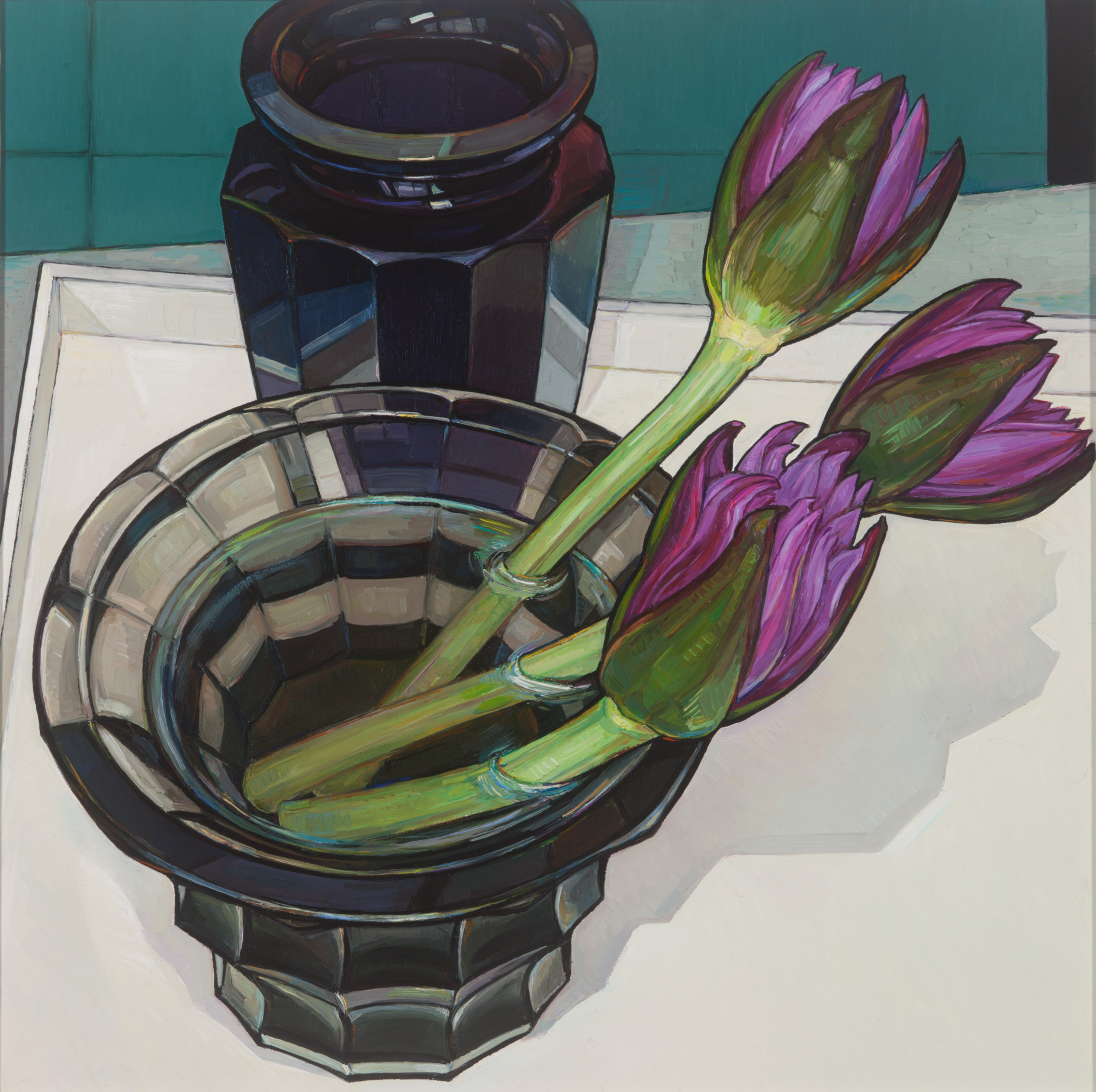Reid on Canning
As a celebrated writer on gardens, local author Christine Reid is drawn to the work of painter Criss Canning. Here Reid writes on Canning’s delightful study which contrasts the dark textures of coloured glass, the vibrant petals of partially opened water lilies and the play of light on water. Readers might like to view Christine’s current exhibition, please see details below.

Reid on Canning
Claude Monet’s water lily paintings, from 1899 to 1926, are world renowned. Art historians have described this amazing series of paintings as containing nothing which can fix the mind in a single moment; they have no earth, no solid forms, nothing on which the eye can focus, and no limits beyond those given by the edge of the painting.
The subject matter of this work by Criss Canning—water, light, reflections and water lilies—may be similar to Monet’s, but the two artists’ visions are radically different. Monet found a way of representing what he called “the moment of landscape” in the exterior world, exploring the fugitive effects of light, a gust of wind or a ripple of water. Canning’s painting, in contrast, is set firmly in an interior world where dark shadows are juxtaposed with light on the solid yet reflective glass forms.
In this striking image, Canning has set firm boundaries in the strong geometric forms of the glass vase and the circular shape of the bowl, and has then placed the richly coloured water lily buds at a sharp angle to them. Yet the cut flowers are still in water, albeit with their neatly cut stems exposed. Canning has further emphasised the point where the stems enter the water with a tiny circle of light paint. Is this, in TS Eliot’s words,”the still point of the turning world”?
There’s an enigmatic quality to this work, exemplified by the quality of stillness in the artist’s vision. Why are the water lilies not fully in bloom? Do the stems show a strength in the plant not apparent in the fully open blooms floating gently in Monet’s world?
One of Australia’s finest painters of still life, Canning finds endless beauty in the imagery of flowers, a recurring motif in her work. Colour, form and texture in flowers and foliage enliven her artistic vision. Her favourite subjects include tulips, poppies and bankias, as well as water lilies.
For Canning, flowers and art come together in her home at Burnside, Ascot, in Central Victoria. In all seasons she is surrounded by the colour fields of Lambley Nursery, developed by her husband David Glenn, who is one of the country’s best-known perennial plant specialists.
Christine Margaret Reid
October 2020